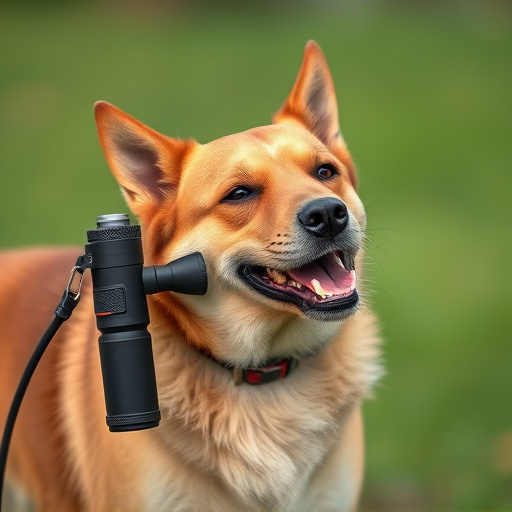Animal control pepper spray has emerged as a valuable tool for managing aggressive animals, especially dogs. Understanding the range at which these sprays are effective is crucial for optimal usage. This article provides an overview of animal control pepper spray range and delves into the science behind dog repellent sprays, focusing on the active ingredients that make them potent deterrents. By exploring different options, you can choose the right pepper spray to ensure effective animal deterrence.
- Understanding Animal Control Pepper Spray Range: An Overview
- The Science Behind Dog Repellent Sprays: Active Ingredients
- Choosing the Right Pepper Spray for Effective Animal Deterrence
Understanding Animal Control Pepper Spray Range: An Overview
Animal control pepper spray range refers to the distance at which these specialized sprays can effectively deter and repel animals, particularly dogs. Understanding this range is crucial for homeowners, farmers, and professionals who need to protect their spaces from unwanted animal intrusions. The effectiveness of such sprays lies in their active ingredients—often capsaicin or similar compounds found in chili peppers—which trigger a burning sensation in the animal’s eyes and respiratory system, causing them to retreat.
The range can vary depending on several factors, including the quality and concentration of the active ingredients, weather conditions, and the size and behavior of the target animals. High-quality dog repellent sprays may have an effective range of up to 30 feet (approximately 10 meters), ensuring a safe and non-lethal deterrent for both humans and animals. Proper application techniques, such as aiming directly at the animal’s face or scent trails, further enhance their efficacy.
The Science Behind Dog Repellent Sprays: Active Ingredients
The effectiveness of dog repellent sprays lies in their active ingredients, which play a crucial role in deterring canine intrusion. These formulations often contain specific chemicals that stimulate a dog’s senses in a way that provokes an instinctive reaction to avoid. For instance, capsaicin, the main component in chili peppers, is a common active ingredient. When sprayed, it irritates a dog’s eyes and nose, triggering a natural response to flee from the source of irritation.
Additionally, other active ingredients like citronella oil or certain synthetic chemicals mimic natural predator scents or produce an unpleasant odor for dogs. These compounds are designed to be non-harmful to the animals but sufficient to make them reconsider approaching the treated area. Understanding these active ingredients and their modes of action is essential in choosing the right dog repellent spray for specific scenarios, ensuring both effective protection and the well-being of the animals.
Choosing the Right Pepper Spray for Effective Animal Deterrence
When selecting a pepper spray for animal control, understanding the active ingredients is key to ensuring its effectiveness as a dog deterrent. Key active components commonly found in such sprays include capsaicin, oleoresin capsicum (OC), and various synthetic analogs. Capsaicin, the primary ingredient responsible for the burning sensation associated with chili peppers, is highly effective in repelling dogs due to their sensitivity to capsaicinoids. Oleoresin capsicum, derived from chili peppers, offers a stronger and longer-lasting effect, making it suitable for larger areas or more persistent problems.
Additionally, synthetic analogs like C8 and C17 capsinoids mimic the properties of natural capsaicin but with enhanced stability and potency, providing a wider range and longer duration of protection. The choice depends on the specific animal behavior you’re addressing—whether it’s preventing dogs from entering a certain area or deterring them from attacking. Always consider factors like spray distance, weather conditions, and target species when selecting an animal control pepper spray for optimal results as a dog repellent.
Animal control pepper spray ranges offer a non-lethal solution for deterring wildlife and unwanted pets. By understanding the science behind these sprays, specifically the active ingredients that stimulate a safe yet effective response, users can make informed decisions when choosing the right product. When selecting a dog repellent spray, consider factors like scent, concentration, and application method to ensure maximum effectiveness in keeping animals at bay while preserving safety for both humans and animals.
